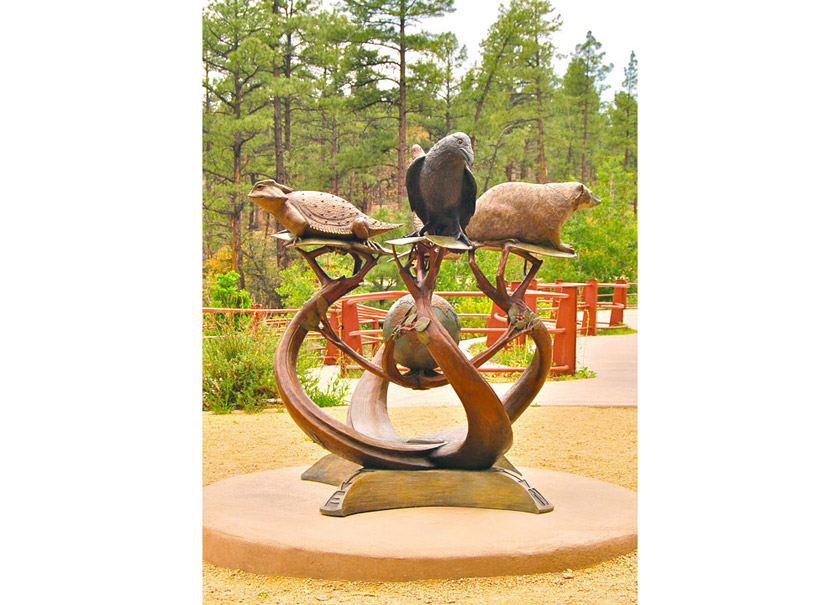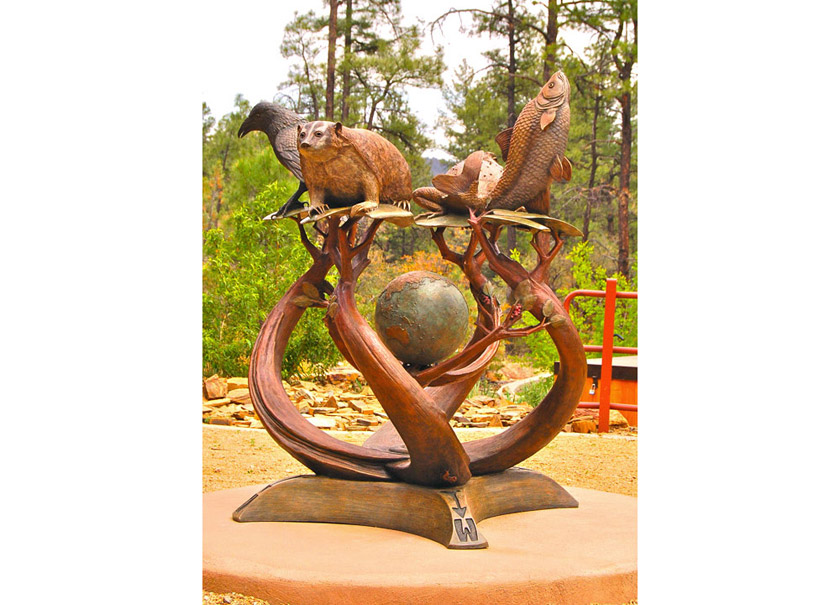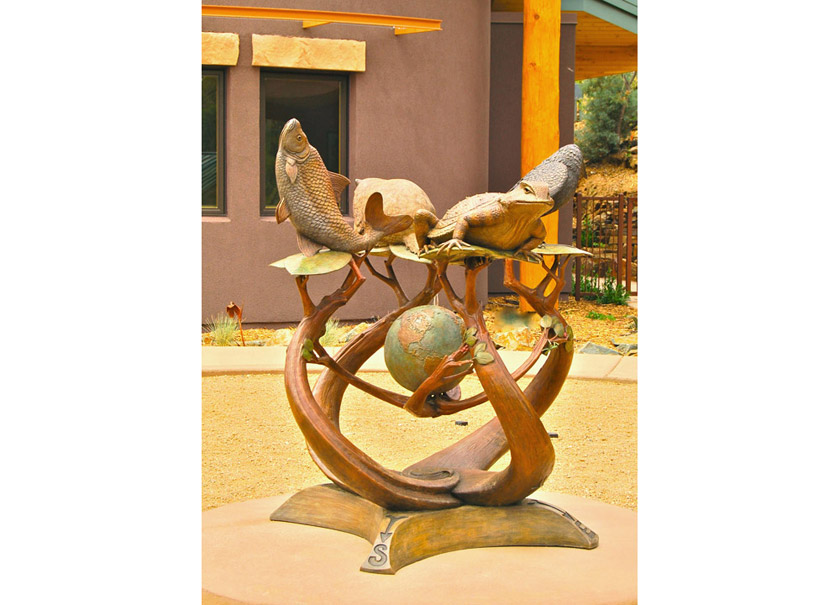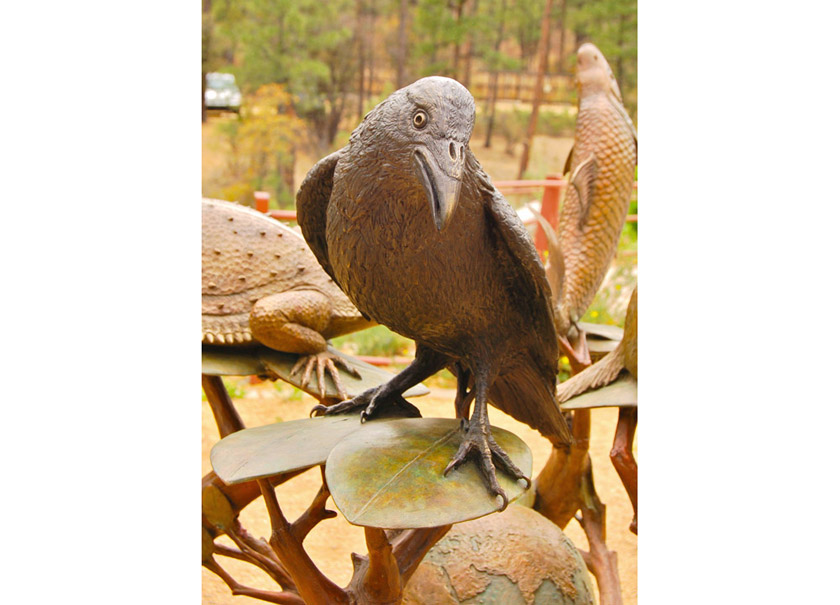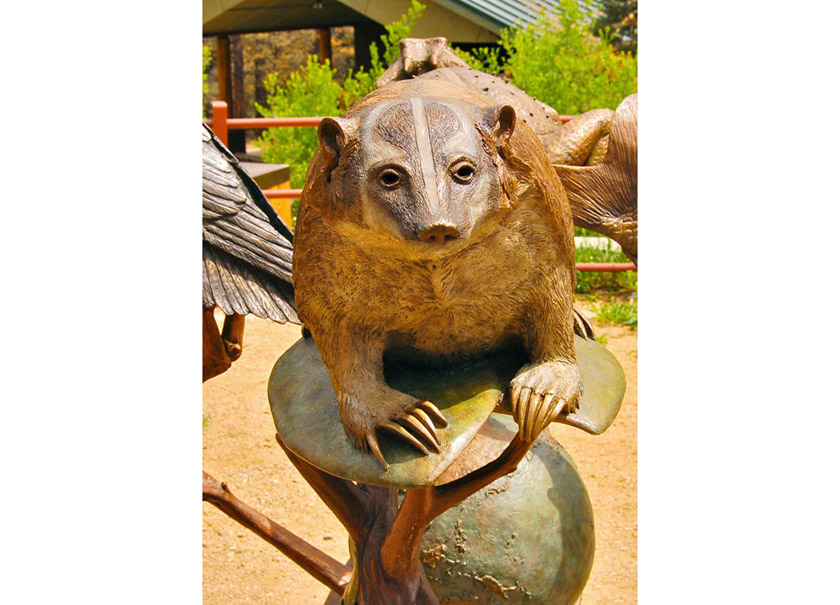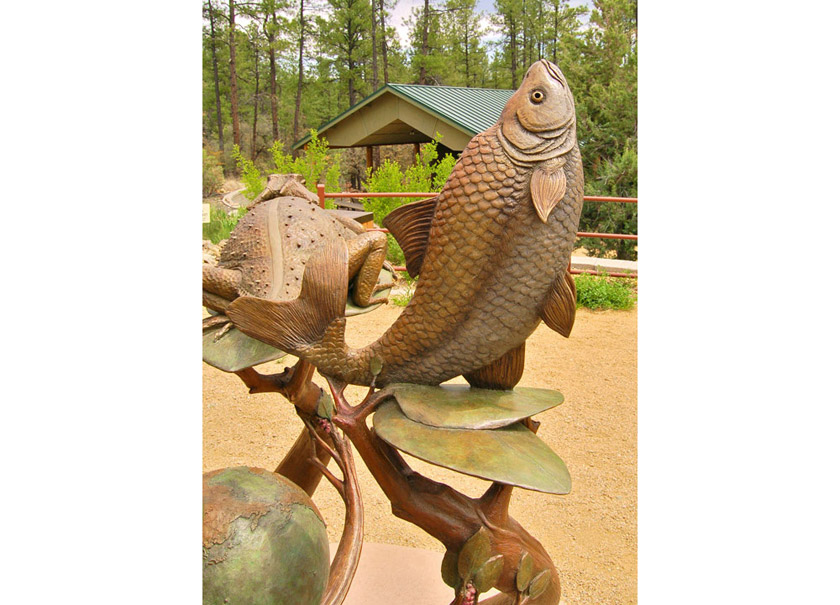Equipoise
Dimensions: 4.5’w x 5’h x 4.5’d
Please contact for current price.
Heather was commissioned by the Highlands Center for Natural History to create a large bronze sculpture for their new 80 acre campus, located in Prescott, Arizona, that blends together several of their key objectives.
She created this monument, which she has named “Equipoise”, to help inspire and educate the curious observer of nature. That idea, and the sculpture itself, incorporates many important aspects of nature and education essential to the H.C.N.H. mission, not the least of which is their special hands-on method of teaching about science and the natural world. It invites people to touch it, to feel it, to walk around it, to investigate all its parts, and then to wonder about it. Children will be able to discover hidden insects among the spiraling manzanita branches. They will find the four cardinal points at its base, a snail shells spiral shape, and Planet Earth held gently in the center of the piece. Through the playful composition of plants and animals of the Central Arizona Highlands represented in this sculpture, visitors can learn about the interconnectedness, balance, and dynamism of ecological systems and relationships between the living and nonliving world.
The four ancient ‘elements’ of our planet are never far from our thoughts these days, and the artist has used four charismatic animals of our region to represent these essential elements. We are reminded of how the earth itself is our home, just as it is for the courageous burrowing badger. The endangered round tail chub makes us think of precious clear, clean water, its importance in our lives and the lives of every living thing. The ubiquitous and clever raven represents the element of air, and perhaps also reminds us of freedom and fun, and of the success of an omnivorous lifestyle, while the horned lizard, who needs the heat of the sun to warm her blood, reminds us of fire and its dual power to destroy as well as to create life. These creatures are confidently poised on the leafy ends of seemingly fragile manzanita branches, but, as Henry Beston put it, “… they are other nations, caught with ourselves in the net of life and time, fellow prisoners of the splendor and travail of the earth.”
Neither adults nor children will be satisfied with simple explanations, however, but rather will be inspired to delve deeper into the mystery and wonder of the diversity of our natural world and the systems that support us all.

